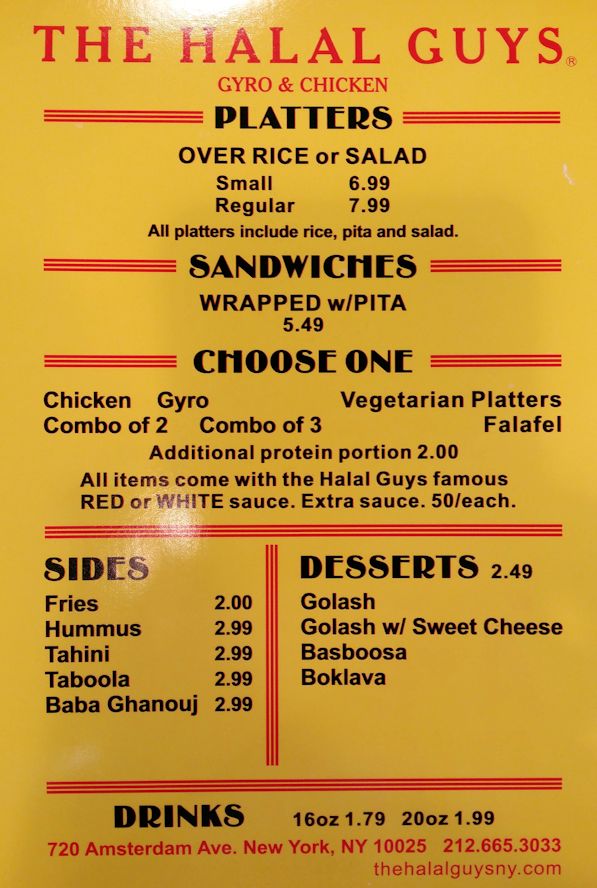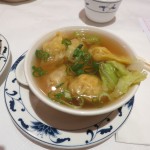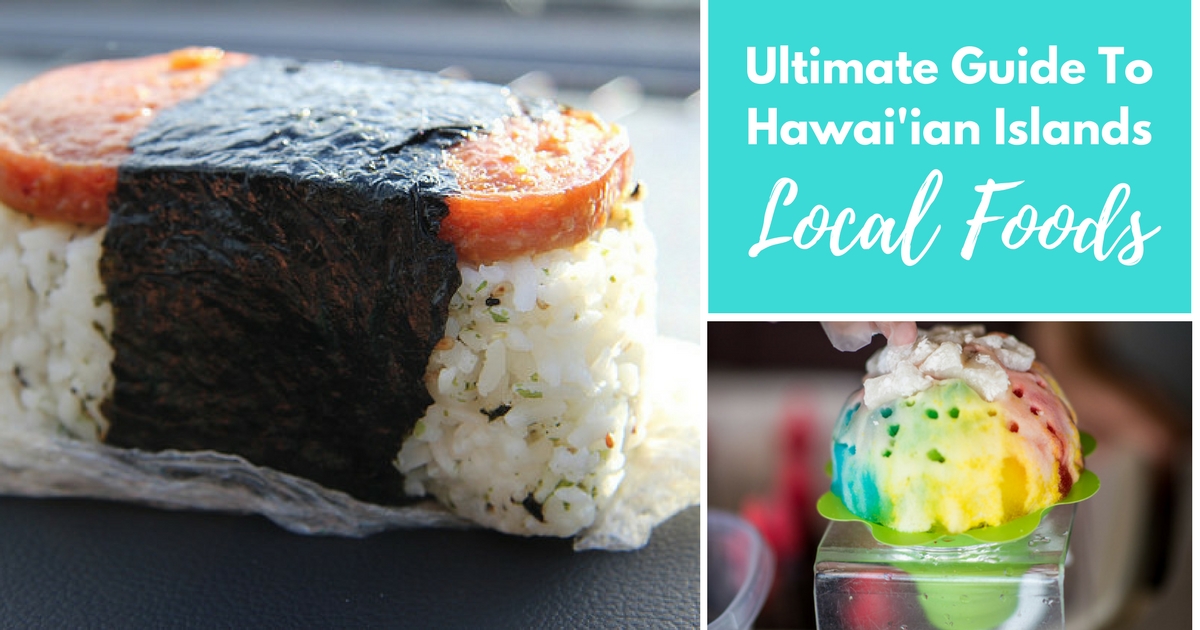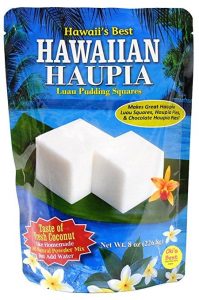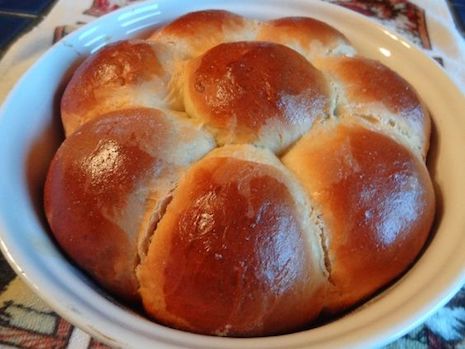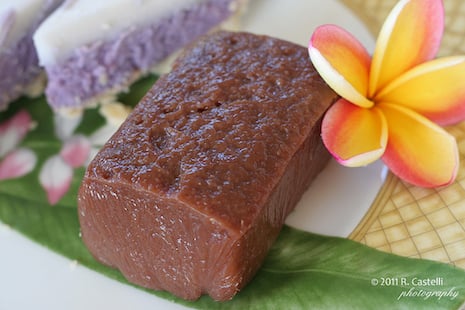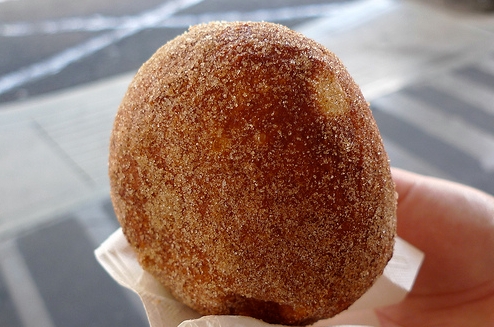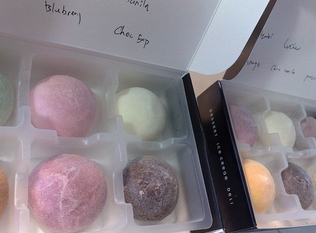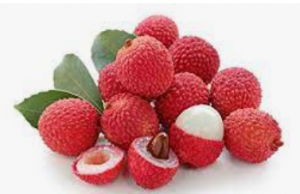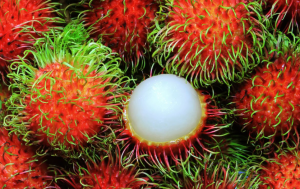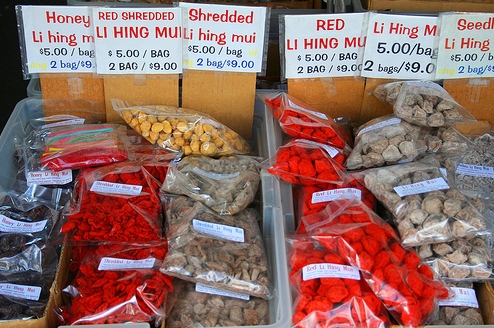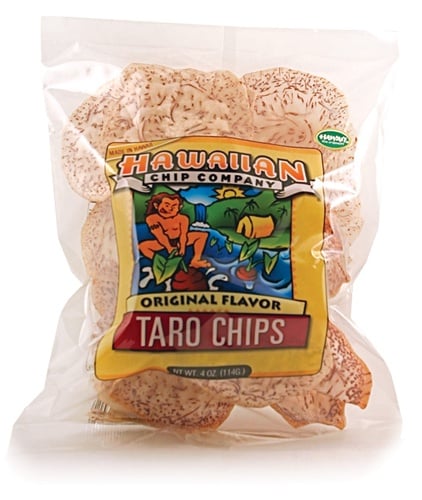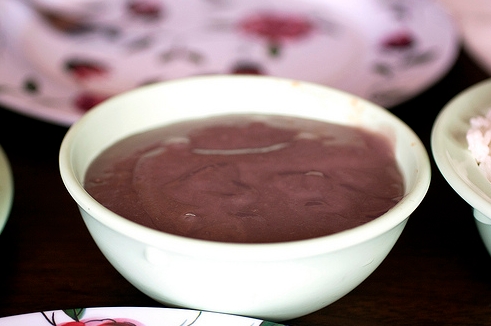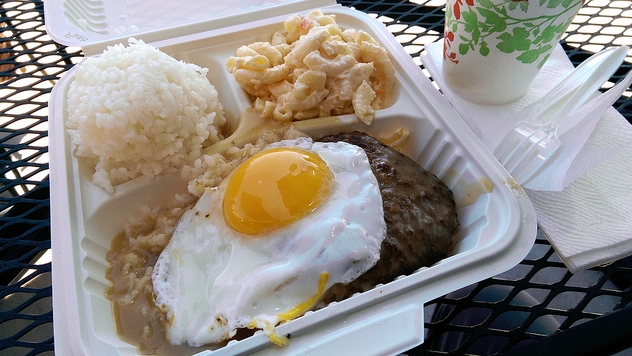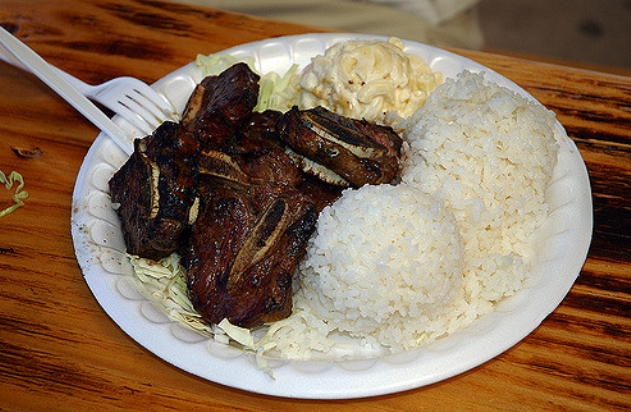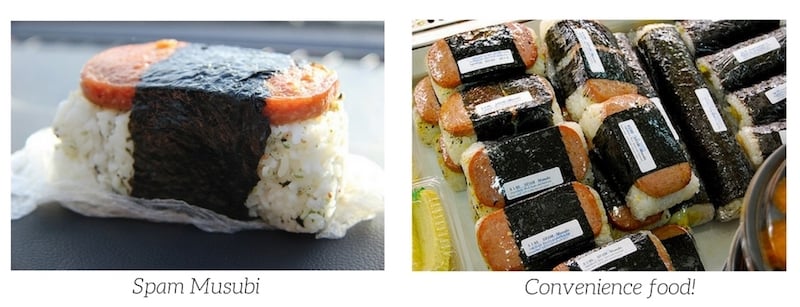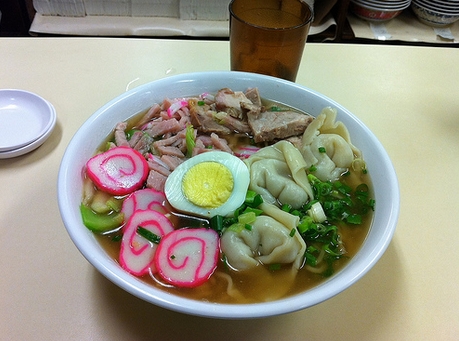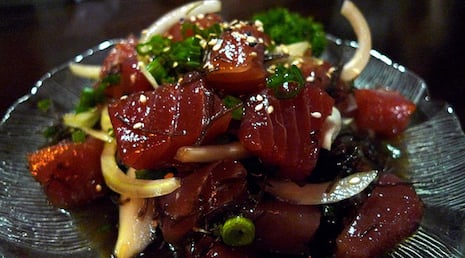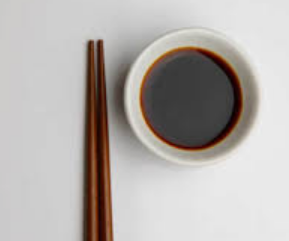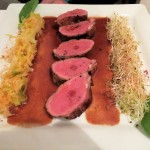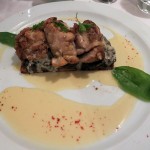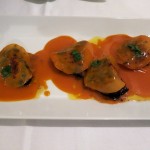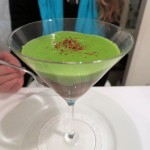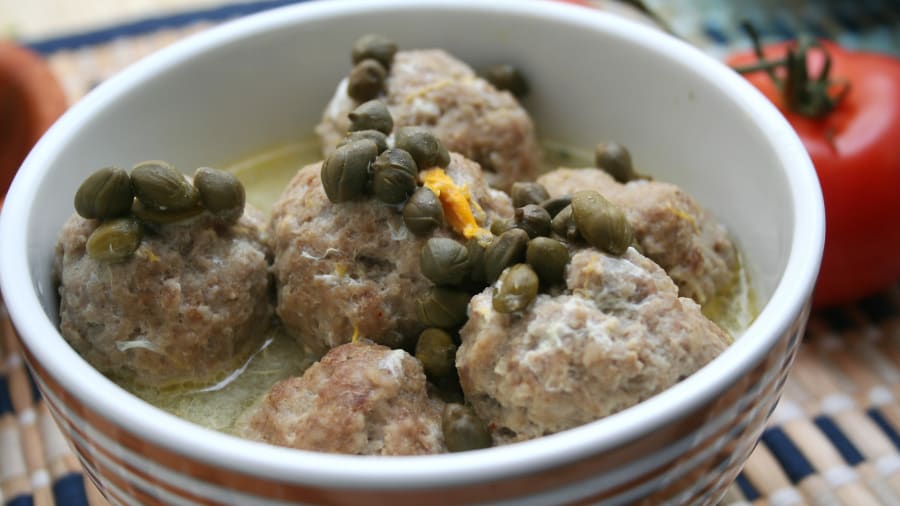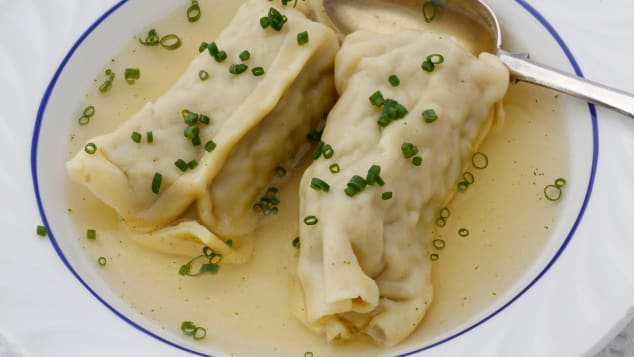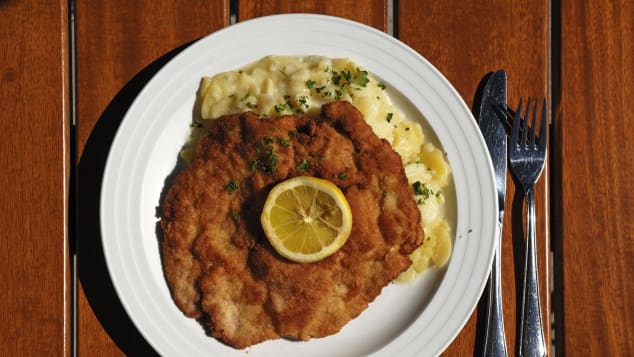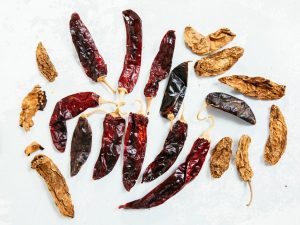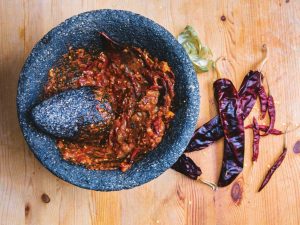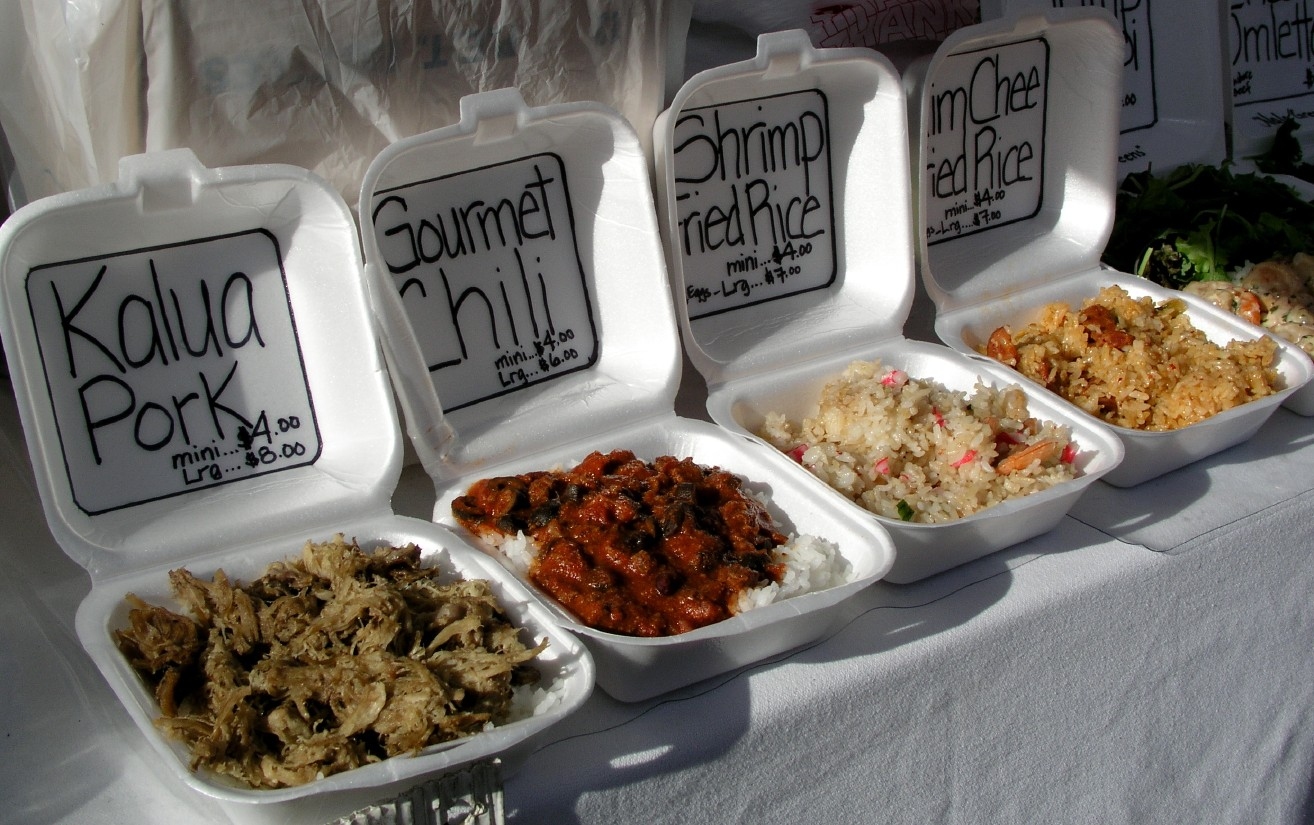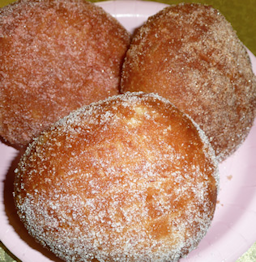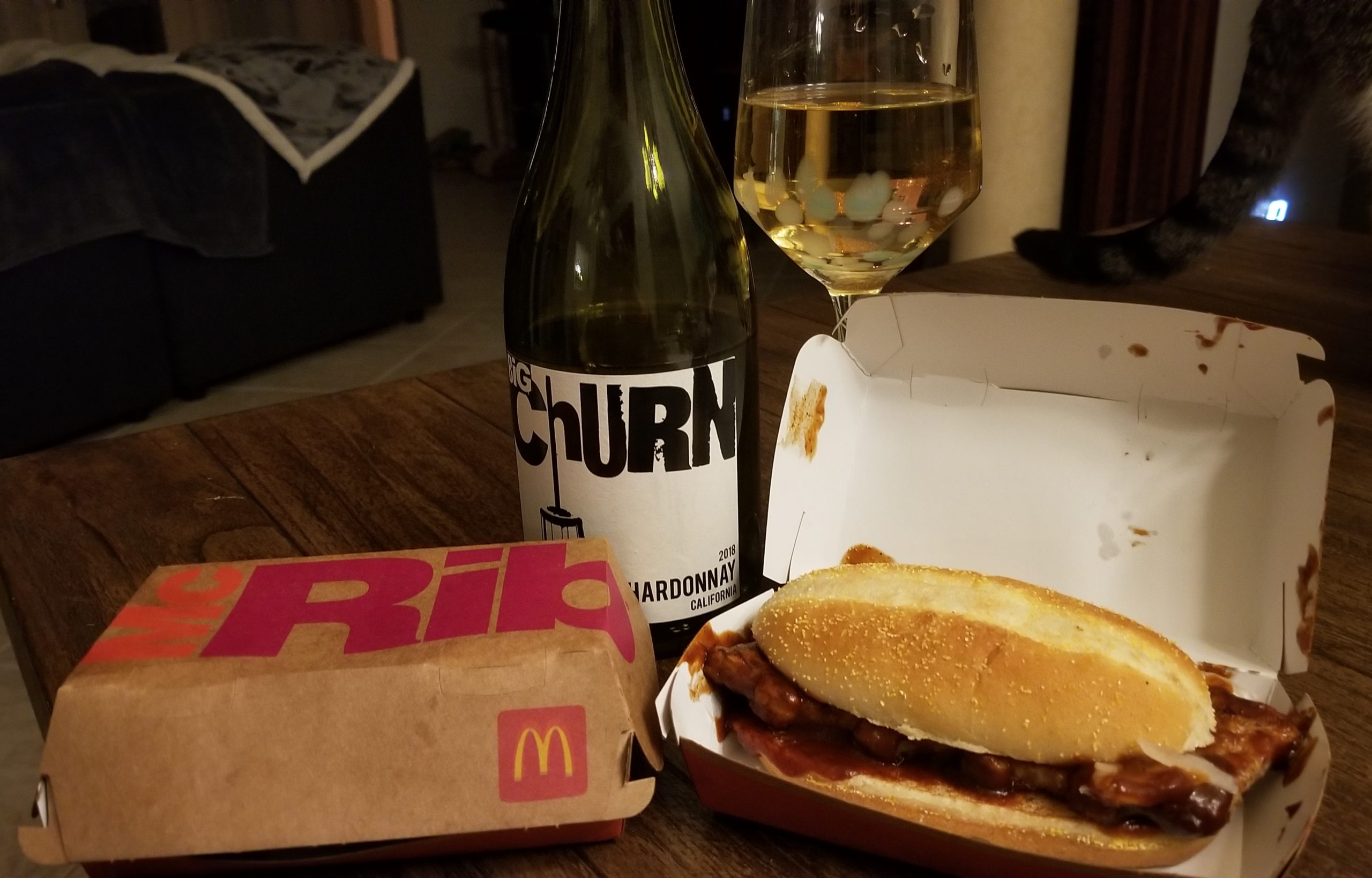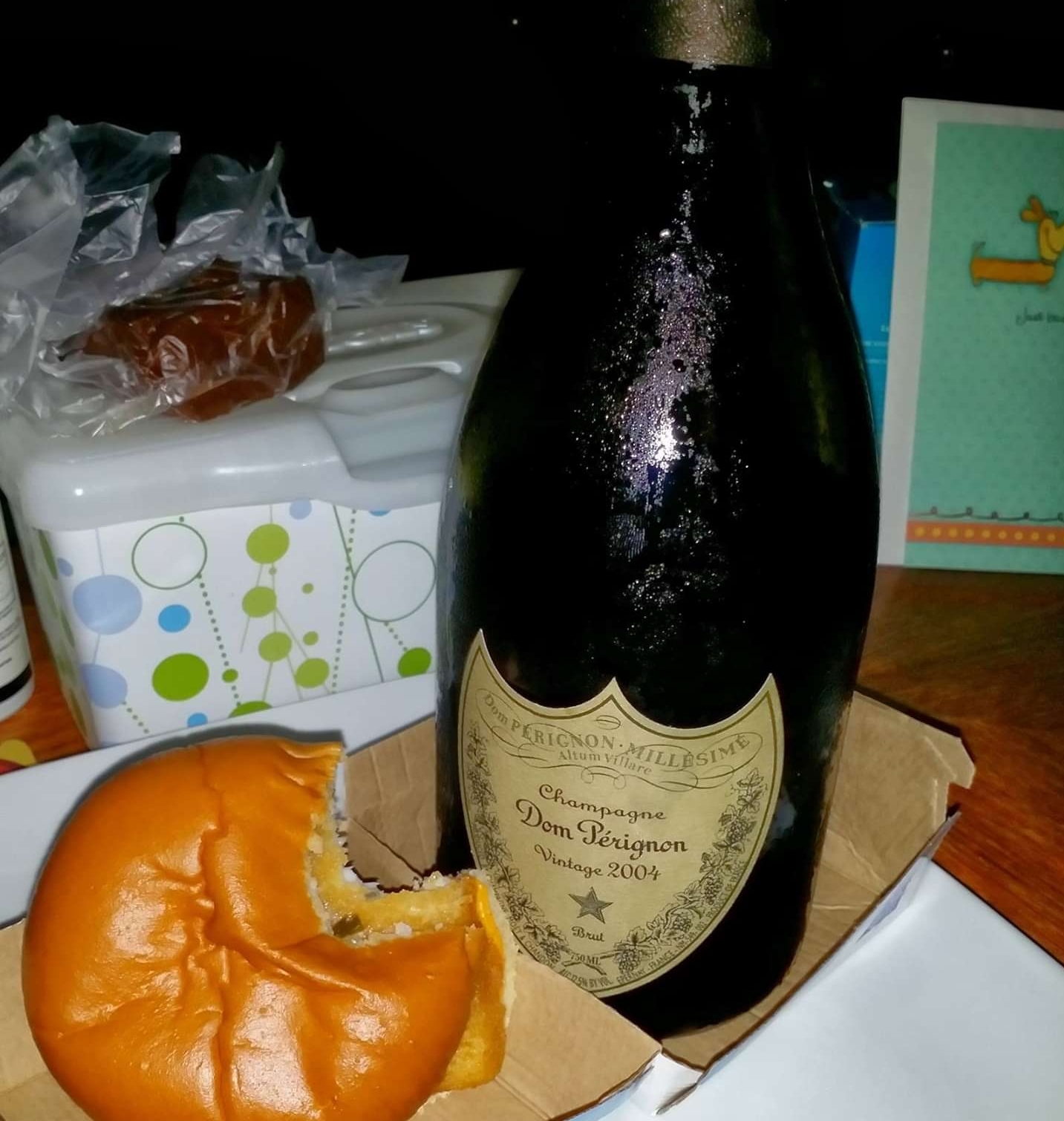By Matthew Gray © –  Matthew Gray is the Chef, Owner & Founder of Hawaii Food Tours. He’s a former food writer and Restaurant Reviewer, and a long-time talk-radio host and presenter. Matthew may be reached via email – Contact Matthew Gray — Matthew@HawaiiFoodTours.com
Matthew Gray is the Chef, Owner & Founder of Hawaii Food Tours. He’s a former food writer and Restaurant Reviewer, and a long-time talk-radio host and presenter. Matthew may be reached via email – Contact Matthew Gray — Matthew@HawaiiFoodTours.com
ALI BABA’S LAST SUPPER
Looking like a delicately stuffed and chocolate-dipped strawberry, she paused in the Moroccan arched doorway. Draped in a red silk blouse and body-hugging blue jeans, she wore an antique locket filled with saffron.
Her name was Solana Jensen, a self-proclaimed pleasure-pot and a traveling freelance cook. She sauntered into the cozy little Cafe Yoghurt where I had stopped for tea. Turns out she was looking to sell her car.
I didn’t know it at the time, but I would be the proud owner of a 1974 Ford Cortina before the day was done. The Cortina had quite an interesting history behind it, but the best was yet to come.
Catching my attention and holding it like an inside straight, Solana approached and floated down upon the pillow beside me. I do not look like Mel Gibson, but for some reason women find me cuddly and safe — a mixed blessing indeed.
The waiter bowed and, calling me `Ali Baba’, took my order.
“Why did the waiter call you Ali Baba?” she inquired.
“For some reason everyone here calls me Ali Baba” I responded.
“Must be your size” she said with a provocative gaze…. “or your beard.”
Offering her hand she said, “My name’s Solana, what’s yours?”
“My name’s Matthew.”
Solana smelled different than any other woman. “So, Ali Baba, you look American with possibly some eastern European in you, am I right?” she deduced.
“Yes, there’s some Russian and Polish in my gene pool. I’m impressed.”
“Ok, your turn. Take your best shot at guessing my heritage,” she invited. I studied her exotic coloring and features but could not guess. “I give up, tell me,” I said.
“My mother was full-blooded Sioux,” she boasted, “and my father is Swedish.”
The waiter returned with the jaw-tingling sweetness of Moroccan spearmint tea. It would be the bridge that joined our taste buds eternally. A fascinating custom of pouring this tea from great heights into a small glass was an endearing aspect of food-service I hadn’t witnessed previously. As difficult as flipping the contents of a sauté pan for the uninitiated, the waiter, in one smooth flourish, begin pouring a few inches above the glass, and continued until the tea was streaming down from two or three feet in altitude. All without spilling a drop.
Solana told me she’d been on the road for two and a half years, picking up kitchen work whenever possible.
“One of the great things about cooking is its universal nature,” she said. “No need to be a master linguist; if you can create and combine colors, textures and aromas, one can usually find, at least, temporary employment.” I agreed. It wasn’t the last thing I would agree to.
Solana told me about the Cortina she was selling. She bought it in front of the Australian embassy in London about three years earlier for the grand total of sixty-nine pounds Sterling. She drove around England for a month or so, taking work preparing pub grub before making her way to France and the rest of the European continent.
“Isn’t it amazing that you and I would meet in the middle of the Marrakesh medina?” she asked. “Truly,” I answered.
She was getting more interesting by the second. I decided to invite her to lunch.
“I’m famished, Solana. May I treat you to lunch?”
Lighting up, she leapt to her feet. “I know the perfect place.” I tossed a few dirham on the table and followed her out the door. She held my hand as we made our way through the maze-like streets populated by potion men, snake charmers, and women behind veils. The sweet scent I would later come to recognize as opium was pervasively wafting through the air. An old gypsy villager selling flowers charmed me into buying a small bouquet for my new-found friend.
“Wow, this is scrumptious,” I said, “What am I eating?”
“It’s called tagine, the Moroccan national dish…. couscous, lamb and veggies… simmered together and topped with mint leaves and mandarin orange sections.” We followed that with grilled sardines. We fed the sweet, moist sea delicacies to one another with our fingers. This was my kind of place. We could feed each other without as much as a curious glance from the staff or patrons.
“I could get used to this, Solana. Being fed exotic fare by a beautiful woman in a foreign land. It doesn’t get sexier than this, does it?” I was rapidly letting my guard down as she seduced my senses. “I’d like to kiss you, Ali Baba.” My response was an awkward twitch I could not control, a quirk that delighted Miss Jensen. “Let’s pretend we’re in `The Arabian Nights’” she teased. “Show me your magic!”
Some guys have all the luck, I thought. And this time it happened to be me. With my confidence peaking and my libido looming large on the horizon, I passionately obliged the lady. I was half-way around the world and half-way home at the same exact moment in time.
Solana was staying at a friend of a friend’s place on Avenue Mohammed V. It seems as though every notable place in Morocco was on a street, boulevard, or avenue named Mohammed V. With that information, I wondered how anybody made their appointments on time. But time was not a concern for Moroccan men. The vast majority of the male population I witnessed spent most of their time squatting the day away with buddies, while the women did all the work. Child care, herding the animals, and preparing the meals was women’s work. Apparently the men had plenty of nothing to do. I, on the other hand, had a full day ahead of me.
By the time the day was done, I had seen the Moroccan sights like an insider, and Solana had convinced me to buy her car. Her timing was perfect. In the heat of my desire for her, I would have bought anything. And so I did; later that night at her friend’s borrowed apartment, I found my way inside all her passion.
The next morning after the requisite North African cold shower, it was clear that Solana had big plans for us. It turns out the car I had just bought from her was filled with exotic, tinned foodstuffs that had to be delivered to a small village near Fez, three hundred and fifty kilometers away. Would I, Ali Baba, do that for her, with my newly-purchased automobile? Of course. I knew she had more delights in store for me.
We hadn’t even left town in the old blue Cortina when I was introduced to the first of many of its charms. While negotiating a left hand turn, my right side-view mirror went flying off.
“Don’t worry about it,” she smiled. “I’ll refund you ten bucks for the mirror.”
After four hours of nerve-wracking driving up the mountain road, dodging goats and other exotic farm animals, I began to wonder if Noah’s Ark had made a stop here. Not only was there a huge population of living organisms on this road, but it was frequently only wide enough for either one car — or two oxen.
Through all of this, Solana kept up a steady stream of conversation. I learned that she left home at age seventeen, moved to Japan to become a highly paid exotic dancer, and while there, mastered the art of sushi making. As far as she knew, she was the only stripper/sushi chef Japan had ever seen.
“There’s something I haven’t told you, Ali Baba,” she coyly admitted. “What?” I asked, imagining the worst. “I forgot to mention that I need to make a pick-up when we arrive. No big thing. But we’ll have to leave again as soon as the sun rises.” “Where are we going?” “Oh, just to Tangier,” she tossed, “We’ll have fun.”
She softened her message with a wet juicy kiss. It was almost dark when we finally arrived at our mountain village destination. There was a strange stillness there, as if it were an abandoned set on a Hollywood back lot.
“There’s the house, just up ahead,” she said jubilantly. This was no house like I had ever seen, it was more like a Grand Palace. There was a fortress-like quality with high walls and, to my amazement, video surveillance cameras were all over the place. Before we were even out of the car, two uniformed, gun wielding guards popped out of the bushes. I was twitching and babbling, but Solana was as cool as the drink I wish I had. When the guards saw her face, they waved us on.
“You know these guys?!” I asked. “What the hell is going on here?!”
“They’re just a paranoid bunch. I’ll show you why.” The guards opened the huge iron gates and it was like we had just entered Shangri-La. We got out of the car and my jaw dropped. We were now inside the most beautiful courtyard one could ever imagine. Black marble floors, Mediterranean pink columns, a rainbow of fresh flowers, brightly colored tropical parrots, and flowing fountains. It was like a slice of life borrowed from the Taj Mahal. We were greeted by her friends, Raj and Pierre.
“Raj, Pierre, this is Matthew. Everyone calls him Ali Baba.” Pierre was a Parisian transplant. Raj was Pakistani. They were dressed like Arabian Princes in flowing, exquisite robes. Their command of the `King’s English’ was impeccable. After polite introductions and an exchange of small talk, they insisted we must be hungry from our long journey.
It was true, I was. Solana accepted graciously for us both. They led us through one long opulent corridor after another. I saw a gaggle of beautiful young veiled girls, in one of the gardens we passed. “I suppose that’s the Harem?” I whispered to Solana, but my hosts overheard me. “Yes,” Pierre answered, “Would you care to meet them after dinner?” My awkward twitch went off like clockwork. “Yes!” was all I could manage, perhaps a bit too enthusiastically.
Solana tossed me a jealous look. That surprised and intrigued me almost as much as the ladies in waiting.
Finally we arrived at a formal dining room. My olfactory senses were overcome with serendipitous aromas. Our hosts directed us to the oversized, satin and velvet, jewel-laden pillows. No sooner had we sat down, then we were being attended to by a palace servants appearing out of nowhere. Crystal goblets were filled with a rich and sweet alcoholic concoction made from figs and dates. Our appetites were enhanced by this offering of liquid ambrosia. I noticed the hand-carved low-set table before us was made of koa. Very unusual, considering that this rare and lavish wood is rarely seen outside the Hawaiian Islands.
The array of food was so spectacular. My mind was flummoxed by the sight of it. Phyllo pastries filled with unusual flavors such as squab, goat, and grouper, dusted with powdered sugar. Blinis topped with Beluga caviar, tempura-style lobster tails, foie gras gently sautéed, atop sweet juicy pear flesh, saffron-scented paella, and voluptuous yellow cherries, delighted our taste buds. The Horn of Plenty was sounding triumphantly. But nothing could prepare me for the main course…
Our hosts led us outside to a spectacular sight. A camel on an enormous spit was being rotated by a team of servants. We were tantalized by the revelation that this camel was stuffed with an ostrich, which was stuffed with a pig, and finally, stuffed with a baby lamb. Beat the hell out of any turducken. Anyway, thank God I was wasn’t a vegetarian. The feast went on into the night with belly dancers and musicians. However, the ultimate delight was yet to come.
Solana leaned over and whispered in my ear, “Tonight I’ll make you forget you ever saw those harem girls!”
When I awoke the next morning, after what felt like one of the `1001 Arabian Nights’, the bed was still warm, but Solana was nowhere to be found. However, a blushing young girl had drawn a bath for me in the huge green marble tub, sprinkled with rose petals. She was just drying me off when Solana burst into the room dismissing my charming lovely harem girl with a wave of her hand.
“Oh good, Ali Baba’s up!” she said, glancing south, “We must be leaving.” “Now?” I stammered, “…what about… breakfast?”
“I can’t believe you’re hungry after last night!”
“I’m always hungry,” I said, pulling her in for a kiss. She returned my affection, but it was obvious her mind was already on the road. “I packed some leftovers,” she revealed. “Oh, goodie!” I said, “Camel sandwiches?” I followed her through the corridors, amazed at how well she knew her way around. “Aren’t we going to say goodbye to our hosts?”
“They’re already gone,” she said, opening the door of the Cortina.
The drive down the mountain was filled with talk about the future, about fantasy, and family. It was as if I had known Solana my entire life. I had a wistful feeling I might be falling in love with this woman, experiencing that drunkenness of newborn caring and sharing. “Where do you see yourself in five years?” I asked. “I can’t even tell you where I’ll be in five days,” she answered with a hint of guilty satisfaction.
Her answer ricocheted around in my mind. On the one hand, Solana wasn’t the kind of girl you brought home to mom. To Dad, maybe. But not to Mom. On the other hand, I was captivated like I’d never been before. Struggling with these conflicting thoughts and feelings, my stomach intervened.
“Are you hungry?” I asked, meaning that I was. “Why don’t I pull over and extract some of those camel sandwiches you packed…” “No, I’ll get them,” she interrupted with a geisha-girl smile.
After a tin of tuna in olive oil with marinated carrots and onions, washed down with a bottle of vintage Burgundy that Raj and Pierre had given us, we felt compelled to make love right there on the mountain road. It’s a good thing there wasn’t much traffic.
We’d been back on the road for about two hours when I slammed on the brakes and swerved to avoid hitting a cat. I heard a terrible sound. I knew instantly what had happened. If you’ve never experienced a truly sinking feeling, losing your brakes on a steep mountain road will do it for you.
“Shit! We just lost our brakes,” I said, feeling a fit of achalasia coming on. “Oh God! You’re kidding!”
For the first time in the forty-eight hours that I’d known Solana, I saw panic cross her face. I wanted to reassure her, however, saving our lives took top priority. I down-shifted, slowing the car a bit, but we were clearly out of control. I tried swerving back and forth to slow us down. The emergency hand brake seemed like it would be our best bet, but when I yanked on it, it snapped. We were barreling down the mountain, terror pasted on our faces. The best meals of my life flashed before my eyes.
A crazed thought crossed my mind; Do I really want to die with a woman who sold me this lemon?
“Ali Baba, look!” she yelled, “there’s a van up ahead!” I wondered if I crashed into the van, if that would slow us down or send us both flying off the mountain? The image of a high-velocity, plunging descent to death was less than appealing. I began furiously flashing my lights and honking the horn. Wailing like a banshee, I screamed out the window. “Hey! No brakes! We’re out of control!” “Help!!” Solana yelled. I was glad she said it. Two things I don’t do; ask for directions and scream for help. The driver didn’t respond to our cries.
“Maybe they can’t hear us!” Solana said. She noticed a soccer team decal on the back window of the van. “They’re Italian!” “Oh great, order me a pepperoni,” I muttered. Solana hung out the window, and to my surprise, began screaming in fluent Italian. I don’t know what she said, but it worked. We whizzed by the van, while they gesticulated with that wonderfully expressive style. “What are they going to do?!” I asked.
“They’re going to try to get in front of us! Let’s hope they have their seat belts fastened.” In a very daring Grand Prix move, the Italians were able to get in front of us. We were coming up on a hair-pin turn and there was no way that I would be able to negotiate it. It was now or never. The Italian must have noticed this too because he slammed on his brakes. We went crashing into the van. With the back end of their van crumpled like a spent accordion, we coasted down the hill, kissing the rear bumper, and silently blessed everything Italian.
The Italians were as lucky to be alive as we were. Their daring and courageous stunt saved our lives. They were at their most macho; Solana and I, at our most thankful. We suddenly had a new Italian family, and so, naturally, we ate. They had prosciutto, bread, Reggiano, olives, and Pelligrino. We supplied the camel sandwiches.
After we broke bread, we sang Beatles songs and we danced. I took out my trusty harmonica and silently polled the group to see if they wanted to hear me play. Unable to speak Italian, I pointed to the heavens and declared, “Los Azules!” which was as close as I could come to saying “the Blues” in Italian.
The setting sun illuminating the sky reminded our Italian friends that they had a big soccer game the following morning. It was time for them to go. I saw Solana take them aside and, peeling off three thousand dollars, she offered to buy their van. Joyfully, the Italians accepted Solana’s overly generous offer, and hitched a ride with a passing ox cart. It was obvious from their facial expressions they felt they got a great deal as they waved, “Ciao!”
Solana walked back to where I was sitting, proudly dangling a set of keys. “We have wheels, Ali Baba,” she smiled. “Help me unload the Cortina, darling…”
“Solana, talk to me. What’s the deal here? You seduce me into buying a car that almost got us killed. You take me to some pleasure palace and before I even get to sniff the harem girls, you drag me outta there, and all this before a nutritious and filling breakfast! Now what the hell are you up to?”
Solana had begun dragging what were obviously very heavy suitcases out of the Cortina. “We had breakfast,” she defended.
“Look, let’s start with what’s in these three humongous suitcases. They weren’t in the car when we left Marrakesh, but they’re obviously here now!”
“I’ll explain everything when we get to Tangier,” she said kissing me softly on the neck. “I promise.”
“Darlin’, you may be the hottest ticket in town, but you really rip my knitting! Either come clean about everything right now, or it’s sayonara Solana!”
She paced, kicking a few prickly pears that had fallen from a cactus. I could sense she was struggling with what to do next. I silently hoped she wouldn’t call my bluff on the `sayonara’ line. Finally she spoke.
“Tell ya what, Ali Baba, I’ll buy back the Cortina for twice what you paid.”
“I just saw you put three grand into the Italian’s hands, and now you’re offering me four-hundred dollars for an undriveable car. What am I missing here?!”
Sighing heavily, she prepared herself for the moment of truth. “It’s like this, uh, I needed someone to make the trip up the mountain with me. A woman can’t travel alone safely in this country. I didn’t expect to take you inside the fortress, but you kinda grew on me. I had to pick up this stuff from Pierre and Raj, and it has to be hand-delivered to Tangier by Wednesday morning in order to get the rest of my money.”
“Let me see if I have this straight. You needed a male member of the species to escort you, and I just happened to be available. You make love to me, and tell me the story of your life as if we were going to walk down the aisle and maybe into the sunset. And now I’m aiding and abetting Mata Hari for the deal of the century! What d’ya have in there anyway, dope?!”
“Yes.”
“What?”
“Yes.”
“Yes, we made love and we’re going to walk somewhere together? or “yes” you’ve got three tons of dope in my car?!”
“Opium,” she offered. I felt my blood rush in a thousand directions. She looked so delicious and so deceptive in this moment. I didn’t know whether I wanted to punch her lights out, or rip her skirt off and have my way with her. Women!
Now it was my turn to pace. It was several minutes before my blood settled down to a reasonably slow boil so I could speak. “Solana, it’s possible that I’m in love with you. But I just don’t think I’m cut out for major league smuggling. I’m just a radio guy on vacation. Maybe we should say that it’s been great, but, you know… end it or something?”
“You really mean that?”
“Mean what?”
“The part about possibly being in love with me?”
“Possibly. I can’t think clearly right now.”
Solana handed me the money for the Cortina. “Why don’t you at least come with me to Tangier? We’ll sort it out there. I’ll show you a really great….”
“No! If we’re ending it, let’s end it here and now.”
“Matthew, is that really how you want it?”
“No… but that’s how it’s got to be.”
Solana knew I meant it. She didn’t say any more. She finished hauling her suitcases into the van. I couldn’t bring myself to help my beautiful pirate. She turned and gave me one last kiss. It went on forever and just about melted my determination. I knew my life wasn’t over, but I couldn’t imagine love ever being as sublime as it was with her.
I watched her drive off into the Moroccan sunset until I couldn’t even see the trail of dust. I began walking, trying to find a tiny corner of peace in the chaos that had become my mind. Did I do the right thing? Would it really have killed me to finish the journey? After all, I had been a part of it already. I was sure this wasn’t her first deal. I wondered how much money she would make. I imagined living with her in a villa on the Costa del Sol. What if she would’ve agreed to make this her last job? Could I have lived with that? Did I make a mistake not getting down on my knees and begging her to be my bride? Would any woman ever satisfy me as completely as she?
I was a mental basket case. Who was I kidding?! She had seduced me; and deceived me!
I was missing her already…
I don’t know how long I had walked before it occurred to me that it was dark and didn’t have the slightest idea where I was or where I was going. I heard a car in the distance coming toward me. I felt a twinge of fear sneak up my spine. This was not exactly the safest place for an American to be walking alone. I felt for the Swiss Army knife in my pocket. It was hardly a defense if anyone had genuinely wanted to give me a hard time. I was prepared to hand over the four hundred dollars Solana had just given me. Easy come, easy go.
A car’s headlights emerged from around a bend. I couldn’t make out much about the vehicle until it was alongside me. My heart leapt. I swallowed hard to keep it from jumping out of my throat.
“Solana…?” I said, with a croak in my voice that betrayed my attempt at casualness.
“I don’t have to be in Tangier until Wednesday morning,” Solana responded sweetly. “Yeah, so?”
“So, I thought I would make Ali Baba one last, unforgettable supper…”
Solana was the first girl who knew the way straight to my heart.


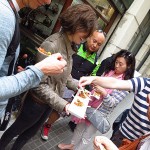

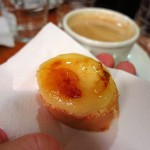
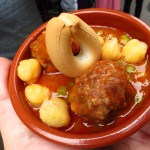

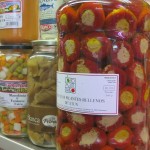







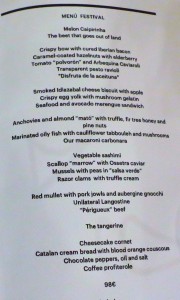
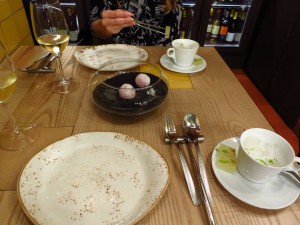
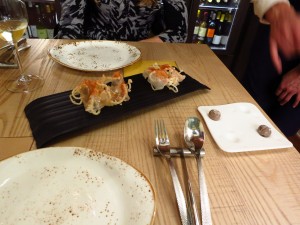
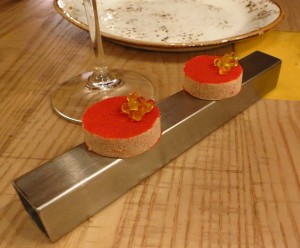
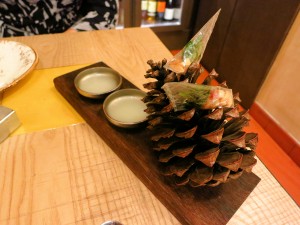

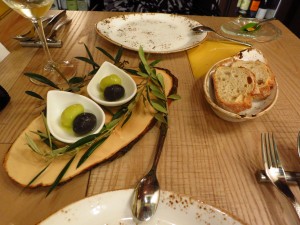
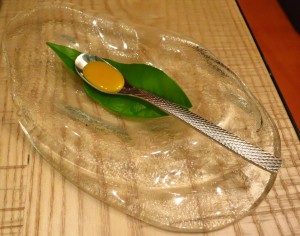
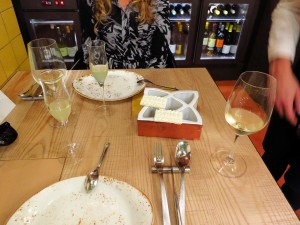
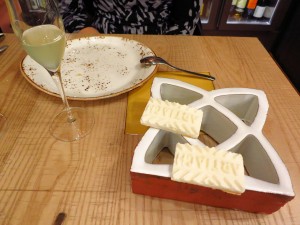
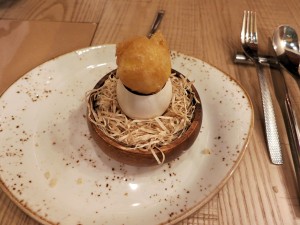
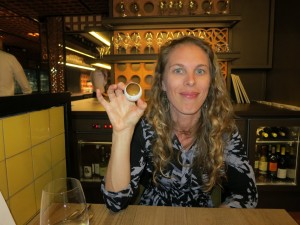
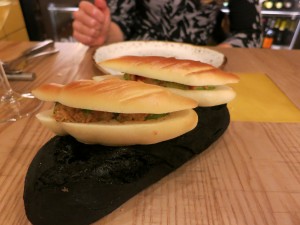
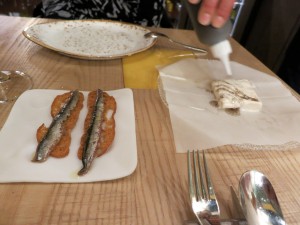
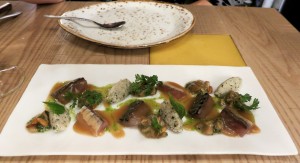
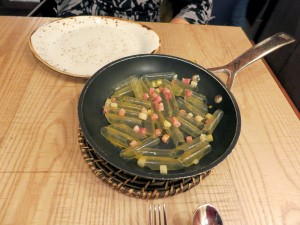
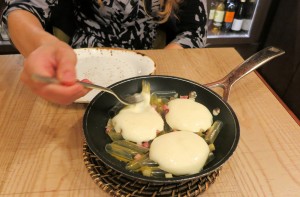
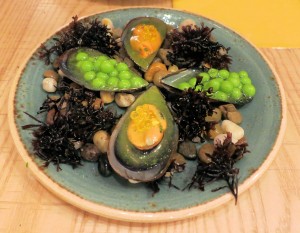
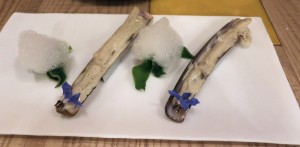

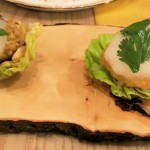
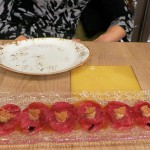





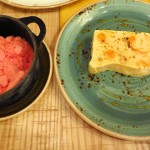
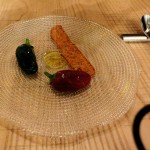
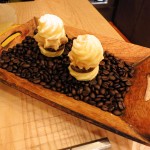

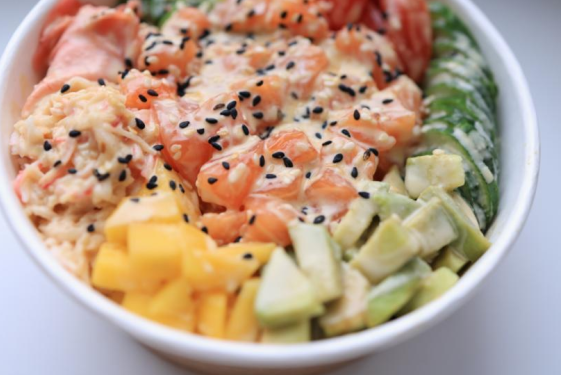
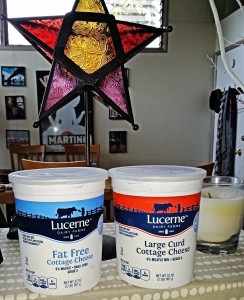
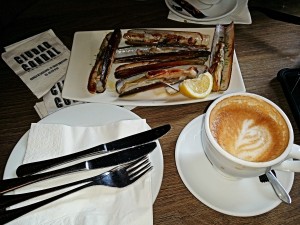
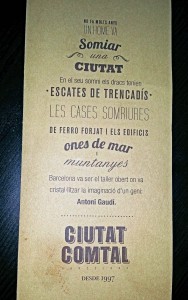

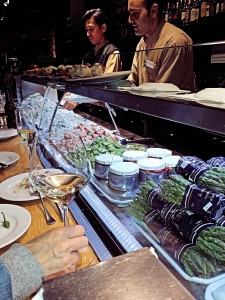
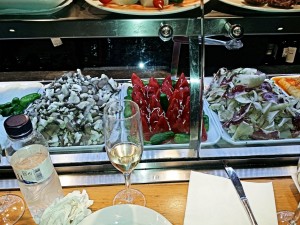
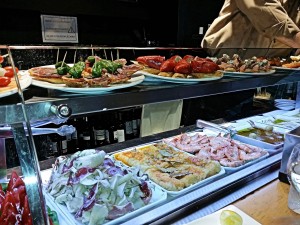
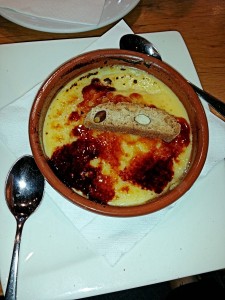
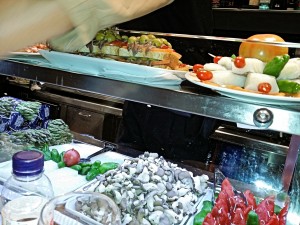
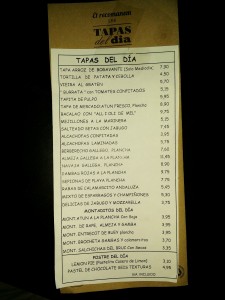

 (who really eats cottage cheese on vacation? I mean, really! Me, I guess), eggs, way too many sausages, juices, anything I wished. Like a kid in a candy store. Ok, like a kid at a breakfast buffet. I digress.
(who really eats cottage cheese on vacation? I mean, really! Me, I guess), eggs, way too many sausages, juices, anything I wished. Like a kid in a candy store. Ok, like a kid at a breakfast buffet. I digress.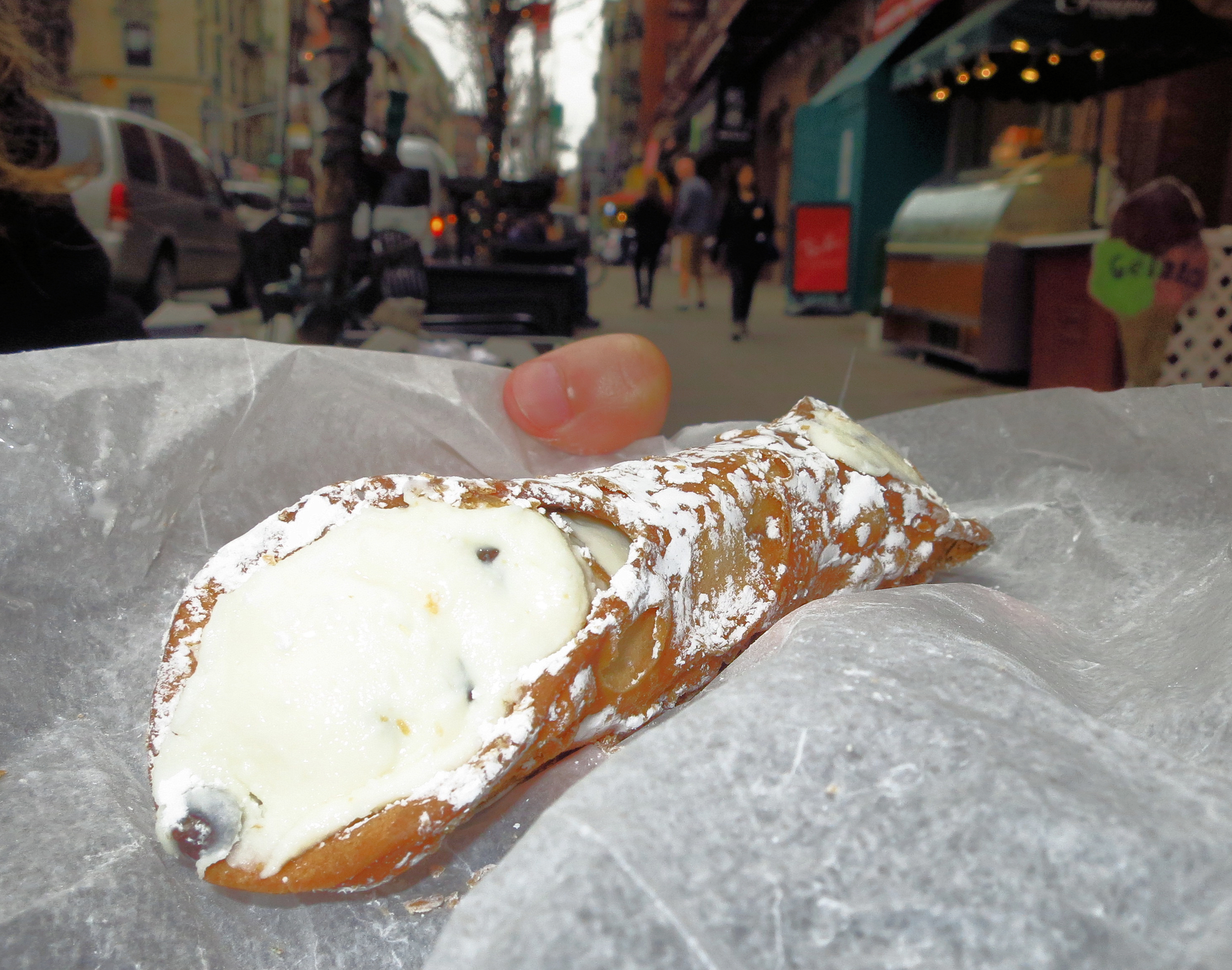 First off, the cannoli, perhaps even more than gelato, the penultimate Italian sweet treat, right? The best ones, hands-down, in New York City, are at La Bella Ferrara (not at the famous “Ferrara’s” – be sure you get the ones at the one down the street – with the “La Bella” in front of it.
First off, the cannoli, perhaps even more than gelato, the penultimate Italian sweet treat, right? The best ones, hands-down, in New York City, are at La Bella Ferrara (not at the famous “Ferrara’s” – be sure you get the ones at the one down the street – with the “La Bella” in front of it.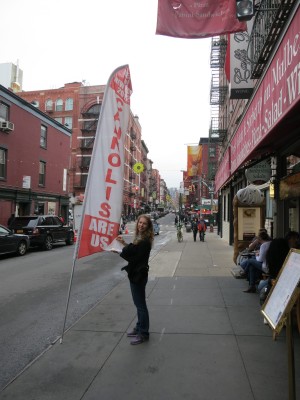


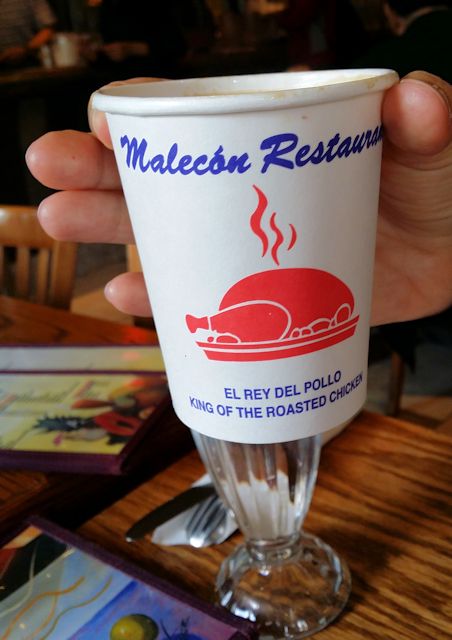 so we make our way to grab a Malecon coffee touted by Genie Joseph as one of the best), said to attract all the city workers in-the-know about the best and cheapest coffee in town. It was indeed very good, and very inexpensive. A good pick-me-up indeed.
so we make our way to grab a Malecon coffee touted by Genie Joseph as one of the best), said to attract all the city workers in-the-know about the best and cheapest coffee in town. It was indeed very good, and very inexpensive. A good pick-me-up indeed.